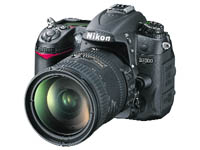NOW that holidays are fast approaching many people will want to get away to their destination of choice. Once upon a time it took Marco Polo to introduce China to the West, an Ibn Battuta to explore the world around him and pen down his observations and keep it alive for time immemorial.
Today, the intrepid traveller seeks instant gratification, and uses the Internet to immediately inform others of what he/she thinks is worth sharing. In the world where most of the cameras come in the form of cellphone cameras, it would seem that dedicated cameras may be a thing of the past. However, this is not so. In fact, there is a special place for cameras that pay tremendous attention to optics and couple them with the latest electronic circuitry to freeze those cherished moments for posterity.
 The single lens reflex camera (SLR), the faithful workhorse of professionals worldwide, has a digital avatar, the DSLR. The top rivals of the SLR world, Cannon and Nikon, have continued their battle to the new format, and thus again, the most dominant players in their SLR segment are these two companies.
The single lens reflex camera (SLR), the faithful workhorse of professionals worldwide, has a digital avatar, the DSLR. The top rivals of the SLR world, Cannon and Nikon, have continued their battle to the new format, and thus again, the most dominant players in their SLR segment are these two companies.
An SLR camera uses a mirror through which the photographer can see through the lens. This allows the photographer to see exactly what will be captured. This gives more control than the compact cameras where the image that the photographer sees may be different from what will be captured
Now, before we go into the DSLR world, we have to know what the last three letters mean. Most of the ordinary cameras you see are the compact cameras which are used by a majority of amateur photographers in the world. These are simple cameras in which various photographic scenarios are programmed. So with a minimal amount of intervention from you, the pictures will come out reasonably well. They suffice for most of the sharing that happens after holidays, or shooting family functions, etc.
 No wonder, SLR cameras were the favourite of all professional photographers, especially news photographers. The typical 35mm film used in SLR cameras allowed the cameras to be smaller than their large format film cousins favoured by studio photographers in the fashion and advertising world.
No wonder, SLR cameras were the favourite of all professional photographers, especially news photographers. The typical 35mm film used in SLR cameras allowed the cameras to be smaller than their large format film cousins favoured by studio photographers in the fashion and advertising world.
The SLR ruled the roost till the 1990s, but its ‘what-you-see-is-what-you-get’ USP was eroded by the advances in digital imaging technology that allowed on-camera live LCD preview screens even on inexpensive compact digital cameras.
However, the DSLR still has one thing that matters, size. Because typically DSLR cameras are much bigger than compact cameras, they can accommodate a larger charge-coupled device. This is the heart of the sensor that has replaced film in cameras, and thus you get much better pictures with DSLR cameras. For most professional photographers, the cost of the camera is just a part of their expenditure on photographic equipment. They actually spend much more on a variety of lenses, and thus camera manufacturers like Cannon and Nikon go the extra mile to provide lenses that can be accommodated on different camera bodies. The interchangeable lenses, some more expensive than the camera body itself, are considered optically better than ones available on compact cameras.
The DSLRs also have negligible shutter lag, which helps to take photographs, especially those of moving objects, precisely. Besides, the CCD used in a typical DSLR is vastly superior to the one used in compact cameras. This allows the camera to capture more light and thus make pictures better. No wonder, the DSLR is the choice of advanced amateur and high-end and professional photographers. That many of the latest ones also shoot video makes them even more versatile.
An SLR camera uses a mirror through which the photographer can see through the lens. This allows the photographer to see exactly what will be captured. This gives more control than the compact cameras where the image that the photographer sees may be different from what will be captured
CHOICES
Canon EOS 550D

Canon EOS 550D is a good entry-level camera with an 18 megapixel sensor. You can shoot HD video (1920×1080) with it, and it incorporates Canon’s cutting-edge technologies such as a DIGIC 4 image processor, 9-point AF system and a 63-dual zone layer metering sensor found in the EOS 7D for total image control.
KEY FEATURES
18 megapixel camera
Full HD recording
LCD with 10,40,000 dot resolution
ISO 100 – ISO 6400 sensitivity
price: Rs 40,000
(with EF S18-55 IS II kit lens)
Canon 60D

In many ways, a great camera, the Canon EOS 60D is a fast, feature-packed, and with excellent photo and video quality. This SLR, which is for advanced users, can also record full HD video at 30/25/24 fps. The 3-inch articulated LCD is very useful for shooting video.
KEY FEATURES
18 megapixel camera
Full HD recording
3 inch wide vari-angle LCD screen ISO 100 – ISO 6400 sensitivity
price: Rs 77,000 (with II EF S18-135mm kit lens)
Nikon D3100

The Nikon D3100 is a very good entry-level DSLR which targets newbies without sacrificing the traditional manual controls expected on a DSLR. The photo quality is, as expected, good and the controls well-laid-out. It shoots full HD movies at 1920 x 1080 resolution at 24 frames per second (fps)
KEY FEATURES
14.2 megapixel camera
Full HD recording
3 inch low-temperature Polysilicon TFT LCD screen
ISO 100 – ISO 3200 sensitivity
price: Rs 33,000 (with II EF S18-135mm kit lens)
Nikon D7000

The Nikon D7000 is one of the latest mid-to-high-end DSLRs from the Nikon stable. It has a great viewfinder and a sophisticated autofocus system. It’s also Nikon’s first DSLR to give 1080p HD video, although it is at 24 fps
KEY FEATURES
16.2 megapixel camera
Full HD recording
3 inch low-temperature
Polysilicon TFT LCD screen
ISO 100 – ISO 6400 sensitivity
price: Rs 75,000
(with AF-S 18-105mm VR kit lens)
Note: The price stated for cameras is the official price, they are normally available a for a little less in the market.
The article by Roopinder Singh was published in The Tribune on June 2, 2012.




